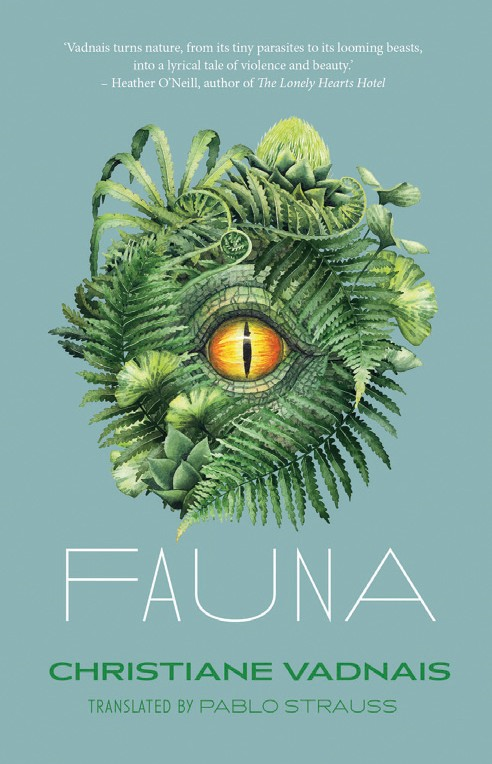Fauna by Christine Vadnais
Fauna
by Christiane Vadnais
translated by Pablo Strauss
Coach house Books, 2020; 136 pages; $20.95
Review by Gerilee McBride
I didn’t mean to read a book about the end of the world. I’ve been avoiding anything plague-related since last March, for obvious reasons. I couldn’t even concentrate enough to read anything more than emails until August. Even the emails were only skimmed if I’m honest. Memory has become slippery as I keep clicking on the same compelling cover image for a series on Netflix that I must have clicked on at least a half dozen times already. The plot follows a group of people trying to survive a plague and the end of the world. No. Just no.
And yet I found myself reading Christiane Vadnais’s slim novel Fauna which explicitly tells the story of the end of the world. or at least the telling of a story of a world going through a metamorphosis thanks to climate change. I couldn’t help but be drawn in by the cover copy which begins, “A thick fog rolls in over Shivering Heights.” It’s as compelling as a good horror story. Something I’ve been avoiding. but, like clicking on that same cover image over and over again, it feels inevitable.
Translated seamlessly from the French by Pablo Strauss, Fauna’s four sections each start with an epigraph about dreaming. The short paragraphs talk about dreaming as a sort of evolutionary fight or flight system — no matter how sophisticated a society we become, our genetic memory is deeply rooted in ancestral environments. With these epigraph-ish words, Vadnais gives us a glimmer of hope in between her quietly terrifying chapters. Chapters where we encounter a cadre of women whose individual stories make up Lilith-esque myths all derived from a changing world which nature is re-consuming. There are floods, parasites, mysterious water creatures, even ravenous polar bears. but mostly there is the unrelenting wetness and moisture of Shivering Heights, the fictional town where most of the action of the novel takes place.
The first story follows Agnes and Heather, strangers until they find themselves the only guests at a Nordic spa in Shivering Heights where Agnes has come to retreat from her stressful corporate job, and where Heather… well, Heather has chalky pointed teeth and bulging eyes and seems a little too exuberant about their forced companionship. When she assures Agnes the spa will make them “completely new women,” she’s not saying that totally in a metaphorical sense. The chapters that follow include recurring character Laura, a scientist studying a parasite that is being found in the polluted waterways in and around Shivering Heights. The light thread of her story creates the rhizomatic structures for other characters to tell their stories, making Laura their touchstone. Thomas with the patch of scales on his lower back, who looks forward to Laura’s visits to his floating village; Cathy who uses one of Laura’s specimens to poison the ogress in her bath; and Lawrence who witnesses Laura’s final triumph.
There is much to unpack in this short novel that almost reads like a long-form poem. The end of the world ends up being not so scary in the sense that Vadnais describes it as a continuation. A radical continuation to be sure, one that has humans transforming into new species. Is it good for the humans? Maybe not, but it might just help the planet survive whatever horror we have created that laid it to waste in the first place. And that’s a little bit hopeful at the very least.

